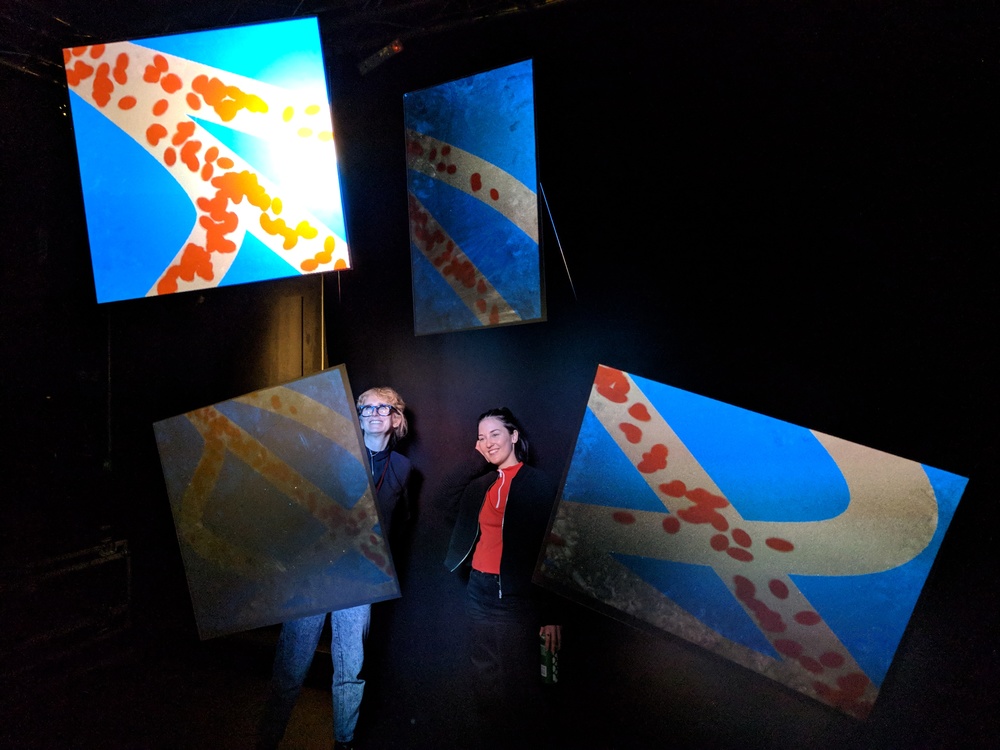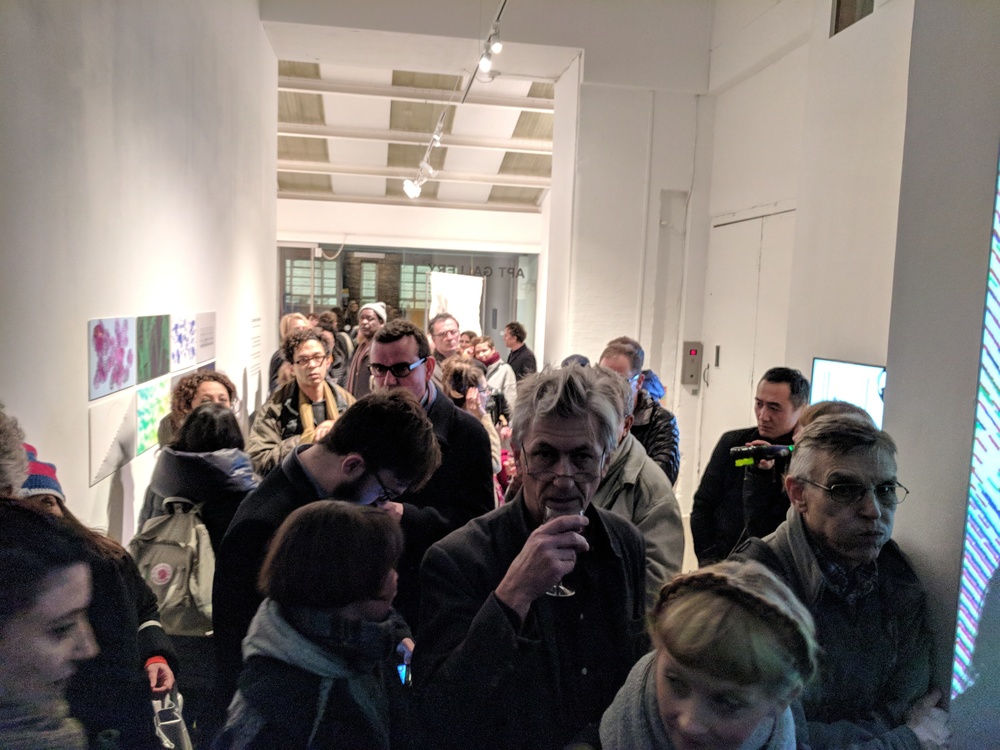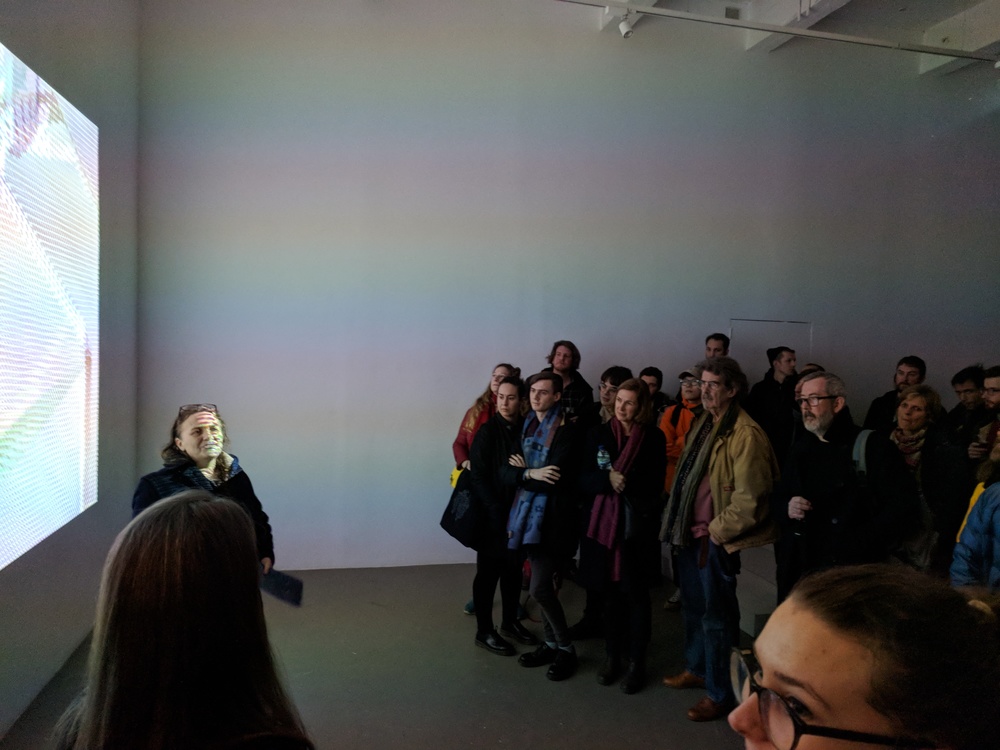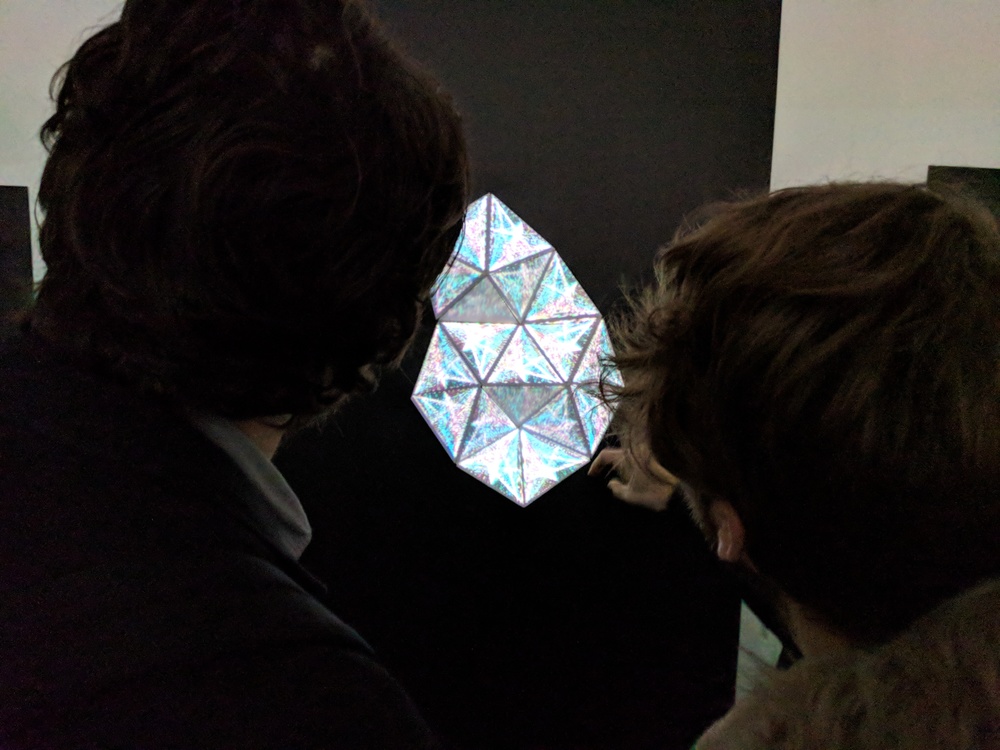Computational Arts Pop-up Exhibition:
a student perspective
What happens when you put a group of MA/MFA Computational Arts students in a darkened room for a few hours...? Projection mapping pop-up exhibition!
by Helena Wee (cohort 2017-18 student)
In early January, after weeks of coding and testing, we were ready to present our creations to the public. The exhibition included print work we had done with Processing, videos and live installations. Visitors were also able to try out interactive sculptures made using Arduino.
The styles of the artists exhibiting varied considerably reflecting our different backgrounds: artists, musicians, film makers, dancers and writers. Just three months ago, many of us had never programmed before, and now we were producing generative computational art using coding as our main tool. Before the exhibition people brought in 3D shapes to project on, arranging them carefully to produce the physical part of the installations. Students busily arranged cubes, adjusted triangular polygons and hung frosted perspex sheets to produce their installations. Then for the next few fevered hours people mapped their projections to the shapes. A pop-up exhibition can be a frantic experience, but luckily we had the help of Pete, one of the technicians, to ease our task. He calmly adjusted projectors and helped us overcome tricky technical problems, whilst we set up our works.
This was the final stretch, with the finish line in view, but to get to this point had taken many hours of programming and debugging. The coding was done in C++ using openFrameworks, with an open source addon called ofxPimapper. We produced animations and timed transitions, mapping them to images of the 3D shapes we wanted to use. At times it proved tricky, as ofxPimapper sometimes threw us unexpected problems. Solving these problems meant we had to be adaptable and change our designs slightly, or alter the way a piece worked. But with perseverance we managed to hack around them and produce our artworks.
Valerio Viperino's work was projected on a folded screen structure. I loved its' use of simple geometric shapes changing over time. His work plays with perception, repetition, shade and colour sometimes reminding me of abstract expressionist paintings. The sharp relief of shapes against light and dark backgrounds, faded or flew off the screen, making me think of digital processes and early historical abstract animation. Other pieces included organic processes unfolding on frosted perspex sheets which looked like giant microscope slides, repeated Lissajous curves, and oriental cherry blossom trees on a folded screen.
The printed Processing artworks were arranged in the main space of the church. On the day of the exhibition Lior's class had a group crit discussing each other's work, and the different ways in which they might show it. Topics ranged from Voronoi diagrams and Mondrian, noisy sound visualisations and computationally stressed out spirals. They hung their works below the stained glass window in the main space. It was a daunting place to show artworks, and there were discussions around how best to do it, but I think they pulled it off in the end. Danny Keig's work "Turning Bodies" reminded me simultaneously of water and the traces left behind by fish swimming in a pool. Eevi Rutanen's work "Adaptive Camouflage and Morphology of Invertebrates" showed generations of computationally created creatures, all trying to adapt to their ecosystems. As the colour of their ecosystem changed, their form and camouflage patterns would alter to best match their environment.
The Processing moving image work included a miniature universe containing hundreds of galaxies, an installation producing abstract patterns in response to sound, and an oscillating iris that changed in response to data from the International Space Station. Putting data into Processing produces some interesting results, and was a strategy I used in my own work too. Teodora Fartan's work "Cyberforms" used trigonometric functions to produce flowing, organic forms. Her work referenced simple harmonic motion, flickering flames and the movement of underwater organisms such as jellyfish. It was a reminder to me of how just a few lines of code can produce some sublime images.
Some of our Arduino sculptures were also on display. James Tregaskis' work "Twitchy Hexagons" came alive as people waved their hands over them, delightfully surprising some unsuspecting visitors. For his project he used a combination of 3D printing, gesture sensors and servos to create this colony of small mechanical creatures. Drum machines, digital musical instruments and light sculptures were all on display, with visitors happily experimenting and interacting with them.
As a group I think we learnt a lot, not just about programming and computing, but also adapting to unforeseen problems, working with each other and putting up an exhibition in a short space of time. It was sometimes quite hard technically, and things did not always go to plan, but overcoming the difficulties was definitely part of what made it fun too! In the projection mapping room the music came on and students started to relax and look at each other's works, appreciating the varying plays of light and colour. It was great to see the results of several weeks hard work finally exhibited.









































































